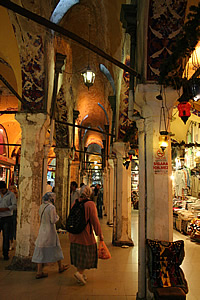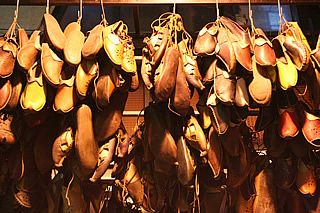

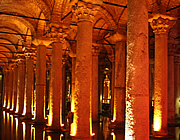
Istanbul has a long and turbulent history. At the cross-roads of east and west it has been coveted by many. The Romans made it capital of the Eastern Empire, part of their legacy an impressive water transport and storage system. Several of the Silk Roads ended here, where the vast Grand Bazaar developed, surrounded by hans for the weary travellers.
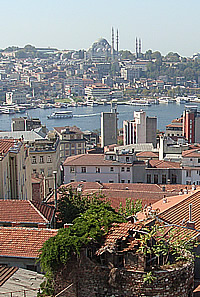
We made a fleeting visit to Istanbul in 1996 and flew in and out in 2006 but always planned to come back to do this city justice and in 2012 we finally made it.
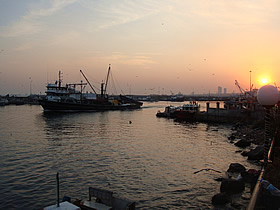
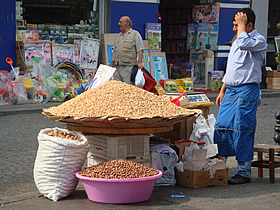
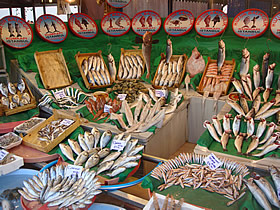
Legend has it that the Greek prince Byas, from Megara, consulted the oracle at Delphi as to where he should build his new city - "opposite the land of the blind" he was told. A previous colony had been established by other Megarians at Chalcedon on the Asiatic side of the Bosphorous and it's said that they must have been blind not to see the advantages of the European site.
Whatever the reason, Byzantium, as it was known in its early centuries, on the European side, was founded around the middle of the seventh century B.C.
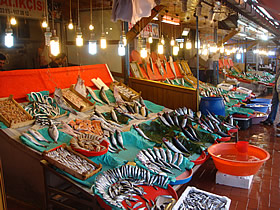
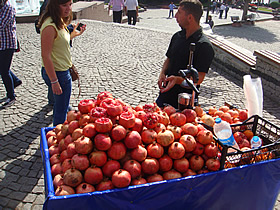
Its location on a peninsula commanding the Bosphorus and Sea of Marmara made it an important strategic location, as well as a trading hub. It thus suffered many attempts at conquest, first Persians and then Spartans taking control in its early centuries.
The city welcomed Alexander the Great and enjoyed prosperity during the Hellenic and Roman period. Though razed to the ground in the second century A.D. by the emperor Septimus Severus for backing the wrong side in the Roman civil war, the city was rebuilt and after a turbulent period for Roman society it surrendered to Constantine on September 18th, 324 A.D.
Constantine was looking for a new capital city. Rome was too distant from the present dangers to the Empire. In 330 A.D., after a period of building, Constantine declared Byzantium - or New Rome - to be the new capital of the Roman Empire. It swiftly became known as Constantinople. It was during this period that the Silk Road trade expanded enormously and Istanbul became the terminus for more than one trade route from the east.
Constantine died in 337 A.D. and was succeeded by Theodosius who tied the Christian church and the political state together, ending toleration of paganism and any beliefs differing from the Christian view. He split the empire on his death between his two sons, Arcadius to be Emperor of the East, Honorius Emperor of the West. Thus Constantinople became the Greek-speaking capital of the Eastern Empire.
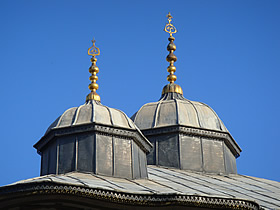
The city came under attack from Avars (a powerful central European people), Persians and Arabs in the seventh century, all of whom were repulsed. In the eighth century continuing Arab raids kept the city in a state of warfare.
In the middle of the ninth century a period of prosperity was heralded by the founding of the Macedonian dynastic rule. Two hundred years later the city was a prize to be fought over by Crusaders from the west and Seljuk Turks from the east.
In 1203 the Fourth Crusade ended in bloody victory for the Crusaders who brutally suppressed the city. For fifty years it was under Latin rule at which point Byzantine rule was restored.
In 1453 the city, at the time in decline, fell to Fatih Sultan Mehmet II, an Ottoman Turk who made Constantinople the capital of his already extensive empire, renaming it Istanbul. He undertook a programme of works which was to include the building of the Topkapi Palace, and a programme of repopulation, bringing in Anatolians and island Greeks as well as many other foreign born peoples.
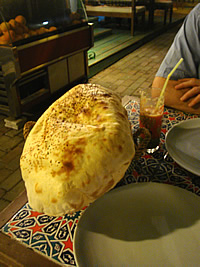
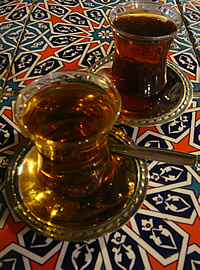
However, it was Suleyman I (1520 -1566) who embarked on the greatest period of building. With his architect Sinan he defined what we know as the Ottoman style, particularly in many mosques .
The Ottoman Empire had reached its peak and thereafter began to shrink under pressure from outside forces. By the late nineteenth century is was in significant decline and was finally ended by the First World War.
The Turkish War of Independence led by Mustafa Kamel resulted in the establishment of a republic in 1923. Mustafa Kamel (Ataturk) made Turkey a secular state and Ankara the new capital. Istanbul suffered a decline in terms of political influence but remains to this day the cultural capital of the country.
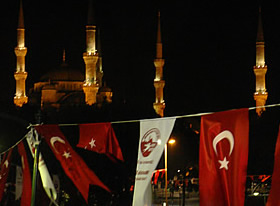
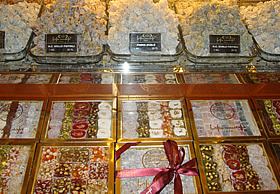
We were staying in the Sultans Royal Hotel, chosen mainly for its excellent location, close to many of the major sights of the city, not far from the Sea of Marmara coast. It was a short walk to the sea and a busy fish market with lovely displays of fresh fish, backed on the seaward side by some great fish restaurants. The shipping lanes on the Sea of Marmara were as busy as ever.
Our first evening we ate at Sultan Kosesi not far from the hotel where fantastic freshly-made puffed-up bread was served as well as freshly squeezed fruit juices - orange and pomegranate was excellent. The lamb dishes were also first rate, finished off with lovely apple tea - we weren't actually going to have any tea but the waiter insisted and gave it on the house - not allowed to finish a meal in Turkey without having tea!
Istanbul is a fascinating city, not just for all the wonderful museums and mosques and other historic sites, but also for the life on the street - the restaurants, wonderful food, fresh fruit juices, endless tea and, needless to say, fabulous Turkish Delight - Lokum. We tried several different flavours at Hafiz Mustafa, loved the pomegranate coated with coconut and the lemon. They also do fabulous-looking baklava - though not for me as I hate honey - and halva which looks like nougat but I'm not sure it's the same thing.

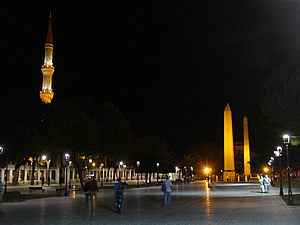
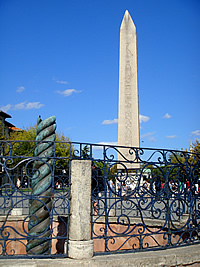
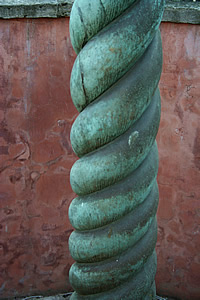
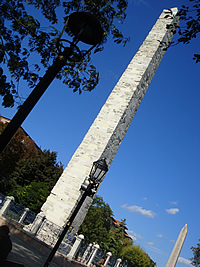
Three beautiful churches also belong within this period. Hagia Sophia is, of course, famous, Chora less well-known but absolutely stunning, and Pammakaristos a small, peaceful church with few visitors but some fine mosaics: Hagia, Sophia, Chora and Pammakaristos.
The Hippodrome was built in 203 A.D. by the Roman Emperor Septimus Severus and much enlarged by Constantine who rededicated it along with the city in 330 A.D. Chariots raced around its 450 metre long oval watched by upto 10,000 spectators in the seats climbing its sides. The central spine of the hippodrome was once lined with monuments including the famous bronze horses which were taken in 1204 and now stand on St Mark's in Venice. Today only three monuments remain. Saddest is the Serpent Column: three entwined snakes which once graced the Temple of Apollo at Delphi, brought to Constantinople by Constantine. Since then the heads have gone, though part of one is said to be in the Archaeological Museum. It now stands in a pit into which people throw rubbish - so sad for a monument which once supported a gold vase dedicated to Apollo by the thirty one Greek cities after victory against the Persians at the Battle of Plataea in 479 B.C.
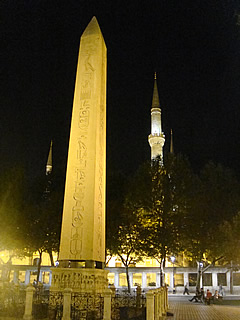
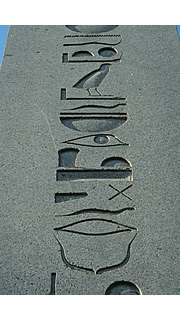
Two obelisks stand here: at the southern end a 32m rough stone pillar of unknown origin which used to be sheathed in bronze. The second is the Obelisk of Theodosius, brought by him from Egypt in 390 A.D. It was originally erected by the pharaoh Thutmosis III around 1500 B.C. The hieroglyphs on each of its sides commemorate his victories in Asia.
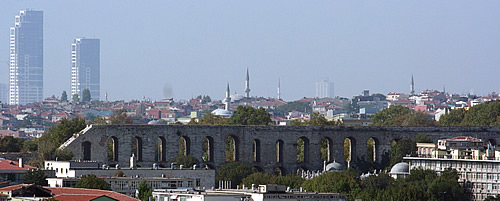
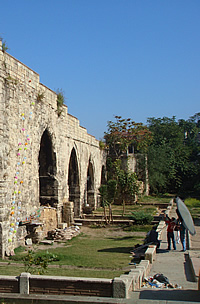
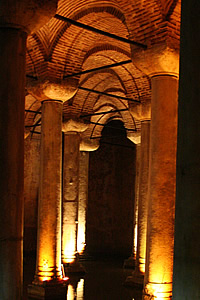
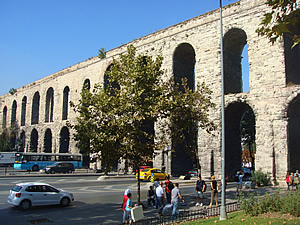
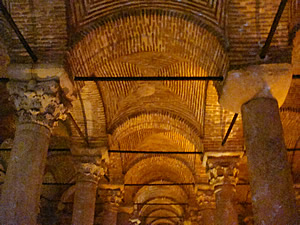
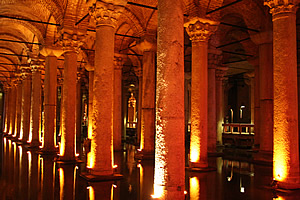
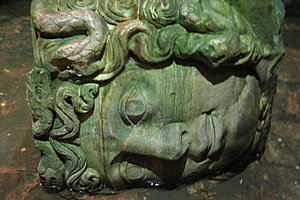
The Aqueduct of Valens is impressive and worth the trek out to the west of the city to see. Built by the Emperor Valens in 375 A.D. it was a necessary solution for bringing water from the western side of the valley into the city where it was stored in underground cisterns.
One such was the Yerebatan Saray or Basilica Cistern. Its history is vague but Justinian built or enlarged it in the sixth century A.D.
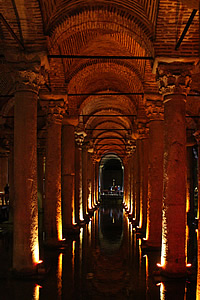
The cavernous space is about 140 by 70 metres and still holds water. The roof is supported by twelve rows of 28 columns which are of different designs, mainly ornate Corinthian capitals, others very plain.
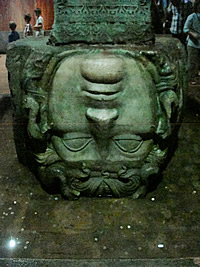
Two columns are supported by carved Gorgon heads, obviously appropriated form elsewhere, one is even on its side.
It is an amazing place, quite dark with lights to show up the columns, very impressive.
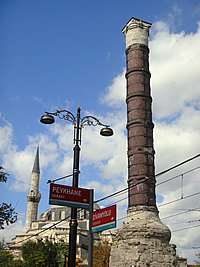
After the glories of the Basilica Cistern, Constantine's Tower is a bit of a come down, though it has a long history. It was built as the centre of the elliptical Forum of Constantine in 328 A.D., originally 57m high and topped with a Corinthian capital on which stood a statue of Constantine as Apollo. A number of relics were said to have been buried beneath it: nails from the True Cross, the stone from which Moses drew water and other Biblical treasures. Helena, mother of Constantine the Great is said to have found the True Cross - the cross on which Christ was crucified. The story goes that she actually found three crosses together and not being able to identify which was the True Cross she had a sick woman touch each in turn. When the invalid touched the True Cross she miraculously recovered.
In the fifth century metal bands were placed around the column for security and these have continued to be kept in place and replaced if necessary. The capital and statue fell in 1106 and were replaced with a cross and in the late seventeenth century a great fire damaged it, leading to its English name of the Burnt Column. It is in a very sorry state today.
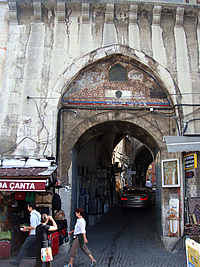
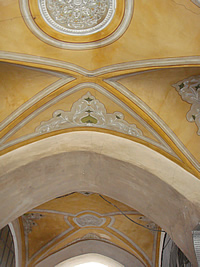
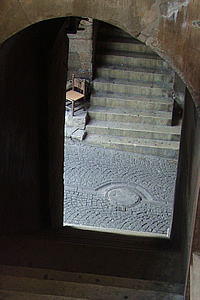
Istanbul was extremely important in the days of the Silk Road - the trade routes which connected the far east with the west. It's position on the Bosphorous made it an ideal terminus of more than one of the routes which might come overland from China around the Taklamakan Desert and either north or or south around the Caspian Sea, or on the southern sea routes around India up through the Persian Gulf or the Red Sea, Jordan and Syria. From here goods could be put onto ships to continue their journey east or traded in the great city's bazaars.
The lodging for both merchants and beasts along the ancient trade routes was provided in the caravanserais, also known as khans or hans. Outside the cities they were built to be one travelling day apart. They often catered for particular trades such as silversmiths or furriers and could have anything from a few rooms to dozens. Typically the beasts would be housed on the ground floor where might also be found shops and workshops, while the traders lodged in the upper levels. Typically each han would also have its own prayer room with ablution fountain and tea house.
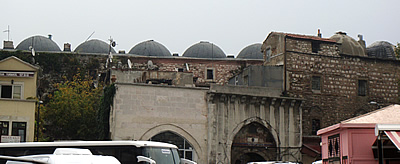
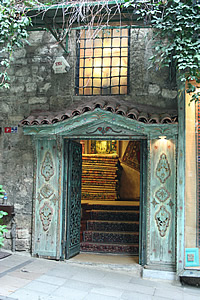
Some hans survive in Istanbul, now home to artisans in ground floor workshops or converted into retail spaces, often dedicated to a particular craft.
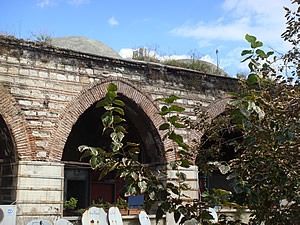
Vezir Han, near Constantine's Column, is one of the largest and earliest Istanbul hans which can still be seen today. The entrance is an impressive gate which had once been finely decorated, as had the tunnel leading from it. This leads first to a narrow lane along the outside walls of the han, and then into the large courtyard of the han itself.
The exterior walls of the han are very attractive, rising to four storeys in places. They accommodate a number of nice-looking shops and cafes.
Inside it is a two-storey arcaded structure, still very much a working environment and probably rather hazardous for visitors, but we carefully walked around it to see what we could find. In fact it is pretty much as it would have been in its great trading days, though there are no stables on the ground floor, the spaces now occupied by workshops, as are the accommodation quarters on the upper level.
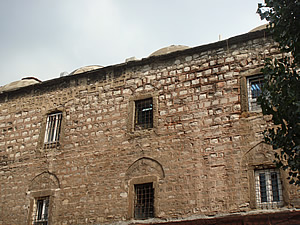
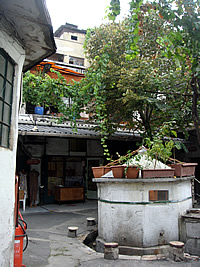
Hans cluster beneath the walls of the Grand Bazaar - a natural place for them to develop close to the workshops and shopkeepers. Several of these can be visited and many now fulfill new functions such as hosting shops and cafes.
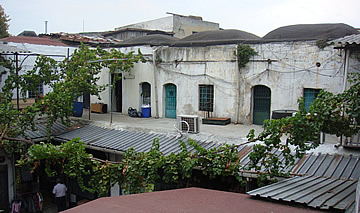
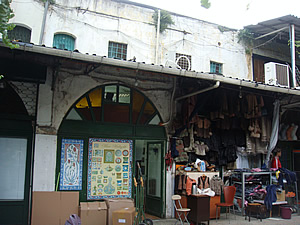
We stumbled upon a very dilapidated small han in the Grand Bazaar. It didn't look to be a very early example but has some of the classic features of a typical han. Its original structure was clear to see, with individual rooms on the upper floor, each with a dome, and an arcaded ground floor which is now filled with small shops and workshops. In the centre of the courtyard was an ablution fountain, set in the walls of an octagonal structure - perhaps a prayer room?
These are quite different to the luxury fondouk we saw in Fes and the desert hans in Cappadocia. In Istanbul the hans seem to be very much a city type, fulfilling a requirement at a fairly basic level, though I'm sure that, here too, there would have been a luxury equivalent for the wealthier traveller.
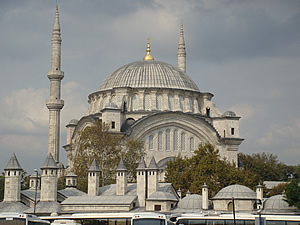
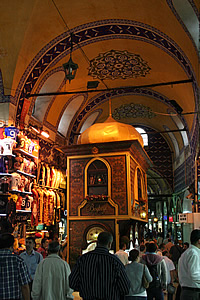
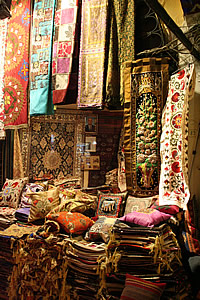
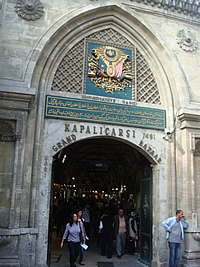
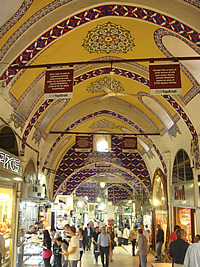
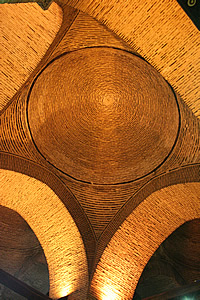
This enormous covered bazaar - 54,853 square metres - was commissioned by Mehmet II soon after he took the city in 1453 to provide funds for Hagia Sophia. Though it has been badly damaged by earthquake and fire it has always been rebuilt. It is a vast area of narrow streets lined with thousands of shops. It seems, today, to cater mostly to the tourist; in parts with mainly glassed-in shops it is much like a modern mall. However, some vestiges of the original buildings and activities can be found.
It has many gates, the most convenient from the city centre is the Nuruosmaniye Gate on the south east of the bazaar, named for the nearby mosque. The bazaar is still divided into areas devoted to a particular type of trade: gold, leather, carpets, etc.
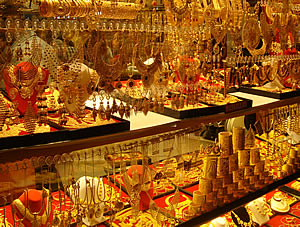
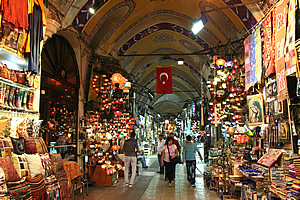
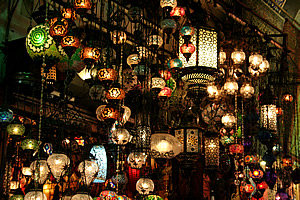
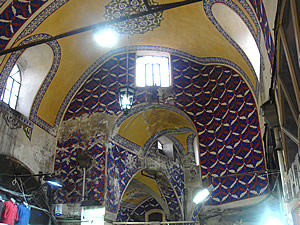
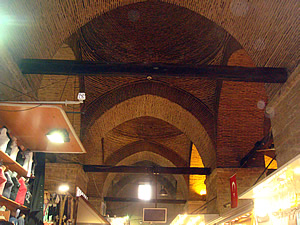
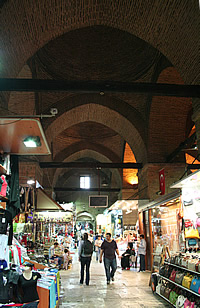
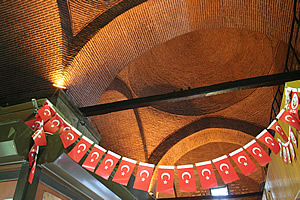
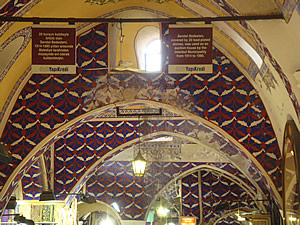
Near the Nuruosmaniye Gate is the area called the Sandal Bedesten where fine cloth was once sold, one of the oldest parts of the bazaar. In more recent times it was used as an auction house.
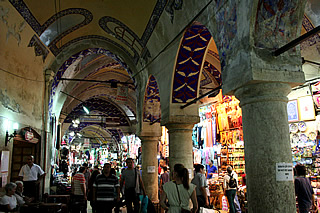
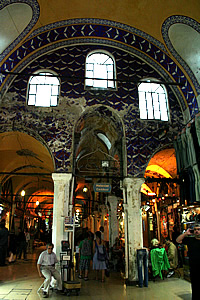
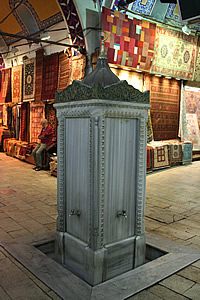
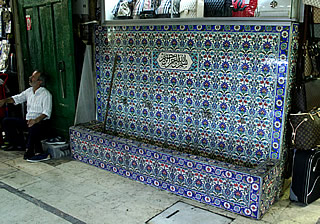
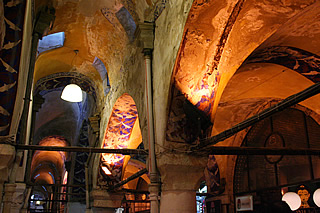
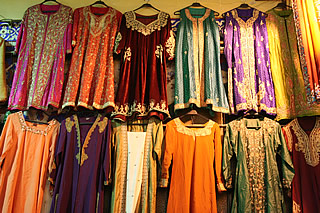
The oldest part of the bazaar, the Ic Bedesten, is right in the middle. It is lower and has rather worn pillars but though it is a bit shabby it is by far the most atmospheric part of the bazaar.
